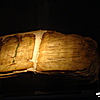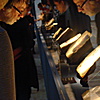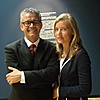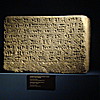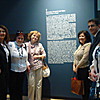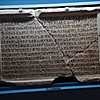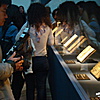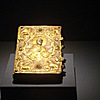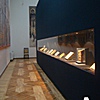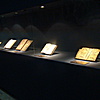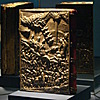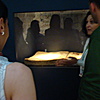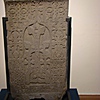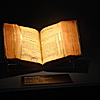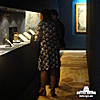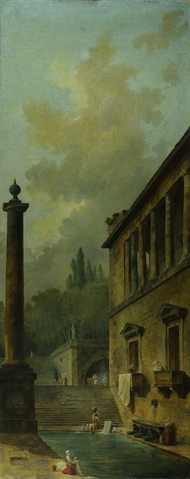Events / Exhibitions
23.04.2012 - 21.09.2012
“THE ETERNITY OF WRITING”
The exhibition “The Eternity of Writing” joined Armenian four great museums, such as the History Museum of Armenia, Museum of Mother See of Holy Etchmiadzin, Matenadaran after M. Mashtots and the National Library of Armenia, in essence, representing rich history of our written culture. The exhibition dedicated to the 500th anniversary of Armenian printing is a unique opportunity to introduce the best and the most valuable exhibits from various museum centers at one exhibition hall. Armenian first book was published 60 years later after Gutenberg’s invention. But Hakob Meghapart’s venetian printed series, such as “Urbatagirk” (Friday Book, 1512), “Pataragatetr” (The Missal, 1513,), “Aghtark” (An Astrological Treatise, 1513,), “Parzatumar” (The Liturgical Calendar, 1513), “Tagharan” (Book of Tagh Songs, 1513), were proceeded by our manuscripts and pre-Mashtots writings. The exhibition “The Eternity of Writing” presents the panorama of Armenian writing heritage, from petroglyphs (rock engravings) to a virtual library: this exhibition is a huge embracing of time. The history of Armenian book with archeological, literary, lithographic and documentary exhibits will be represented at the exhibition:
1. Urartian, Aramaic, Greek and Latin scripts which were proceeded by Armenian writing and were found exclusively in the territory of Armenia.
/from IX c. BC to 405 AD/.
• Inscription fragments, lithographical inscriptions
2. The exhibits of lithographical and manuscript art since the invention of Armenian alphabet by Mesrop Mashtots in 405:
• the exhibits of ancient lithography and manuscripts /V – VII centuries/, cross-stones /X – XIII centuries/
3. The beginning of Armenian printing, 1512 – 1850.
• Armenian first printed books: “Urbatagirk” (Friday Book), “Parzatumar” (The Liturgical Calendar), “Tagharan” (Book of Tagh Songs) and printed Bible
• The samples of books, such as the samples of religious, scientific, literary, philosophical and printed periodicals printed at Armenian first printing centers working abroad (Italy, Netherlands, New Julfa, Constantinople and Smyrna (now Izmir) XVIII c., India, France and Russia).
4. Armenian printing in the territory of Armenia from the beginning to present day.
When the Catholicos Simeon Yerevantsi established printing house in the Mother See of Holy Etchmiadzin Cathedral in 1771, Armenian printing was established in motherland 260 years later after its origin.
103 items of the exhibition present:
The origins of writing /pre-writing period – the 3rd millennium BC – 9th century/
Urartian writing /Urartian period – 9th – 6th centuries BC/
Pre-Mashtots writing, types of writing in usage– 6th century BC, 301- adoption of Christianity
Invention of Armenian alphabet, 405 – 8th c. samples of early Armenian writing
Types of writing – samples of ancient writing
Manuscripts and miniature – manuscripts, 9th-15th centuries.
The beginning of printing – the beginning of Armenian printing, first printed books, metal double-covers of the books and simultaneous manuscripts, 1512-1699’s.
Ancient Armenian books: metal double-covers of the books of 1700-1799 and 1800-1899.
From manuscript to virtual library: the manuscript of Lectionary of King Hethum, and the display of its digital version.
Here unique manuscripts and books from the collections of Matenadaran and the National Library are exhibited. Big and small Armenian manuscript books due to various data are counted up to 30.000 units all over the world, and early printed books are more than 1000. In the National Library of Armenia, there are more than 500 early printed books which are preserved in the department of ancient, unique and archive literature of the library.
Combining the museum’s valuable exhibits, i.e. 17 valuable items from the museums of Mother See of Holy Etchmiadzin, 15 items from the History Museum of Armenia, 37 manuscripts from the Matenadaran and 34 early printed books from the National Library of Armenia, the organizers of the exhibition represent various sections and peculiarities of the national written culture on the basis of the unique exhibition subject.
